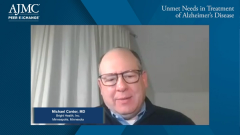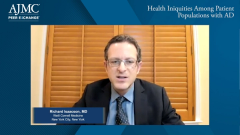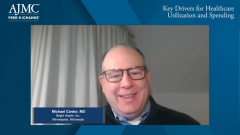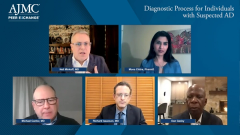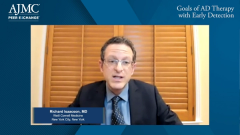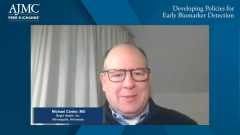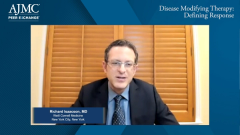
Stratifying Patients for Treatment Eligibility
A discussion on the stratification of patient populations for treatment eligibility based on various decision factors.
Episodes in this series

Neil Minkoff, MD: One of the things that is good about focusing the health care system on a problem is the potential exposure to a new therapy, particularly a newer, more expensive therapy. Look at how much of a difference we started paying to, first rheumatoid arthritis, then psoriasis, then psoriatic arthritis, or the changes in the way we approach MS [multiple sclerosis]. The health care system needed to understand who gets medicine, who does not get medicine, and what we do about it. As we are now staring into a world where the problem is increasing due to the aging of the population, and we have potential DMTs [disease-modifying therapies] coming along, how do we start, a) figuring out who is going to get them, and b) making sure that is an appropriate conversation? How would you start to think about what a threshold for therapy would be? I will ask Richard to kick that off because I am assuming that some of the work you have done has been thinking about how we identify the right patient.
Richard Isaacson, MD: We keep it simple. If a person has a family member or a family history of Alzheimers disease by self-report and no or minimal cognitive complaints, then that is the right patient for us. That is how we stratify patients. We have a memory arm of the clinic that treats people with dementia, and we have a preventive arm that treats people in the pre-dementia phase. We are trying to keep it simple. When we think of early detection and we think of digital devices, we think of online testing.
We think of all the different options out there. For example, before people even come into our clinic [Weill Cornell Medicine], they have to go online and fill out a 45-minute questionnaire that goes into our research database. It has a ton of information there. We also have them take some online cognitive tests before they even come into the clinic. They do some education about what prevention is, and what is and what is not in our control. We are careful about the word prevention. We have to promise not to overpromise, we are honest and up front. We can only do the best we can, and we are going to do everything we can, but in no way, shape, or form is this perfect.
The moral of the story is that we screen patients carefully. Before they come sit next to me, we have an hour-and-a-half of to-dos beforehand. The goal is to see people who are affected, who probably have some degree of genetic risk, who are concerned about their brain health, and who are proactive, want to do something, and have no or minimal cognitive complaints.
Transcript edited for clarity.
Newsletter
Stay ahead of policy, cost, and value—subscribe to AJMC for expert insights at the intersection of clinical care and health economics.

